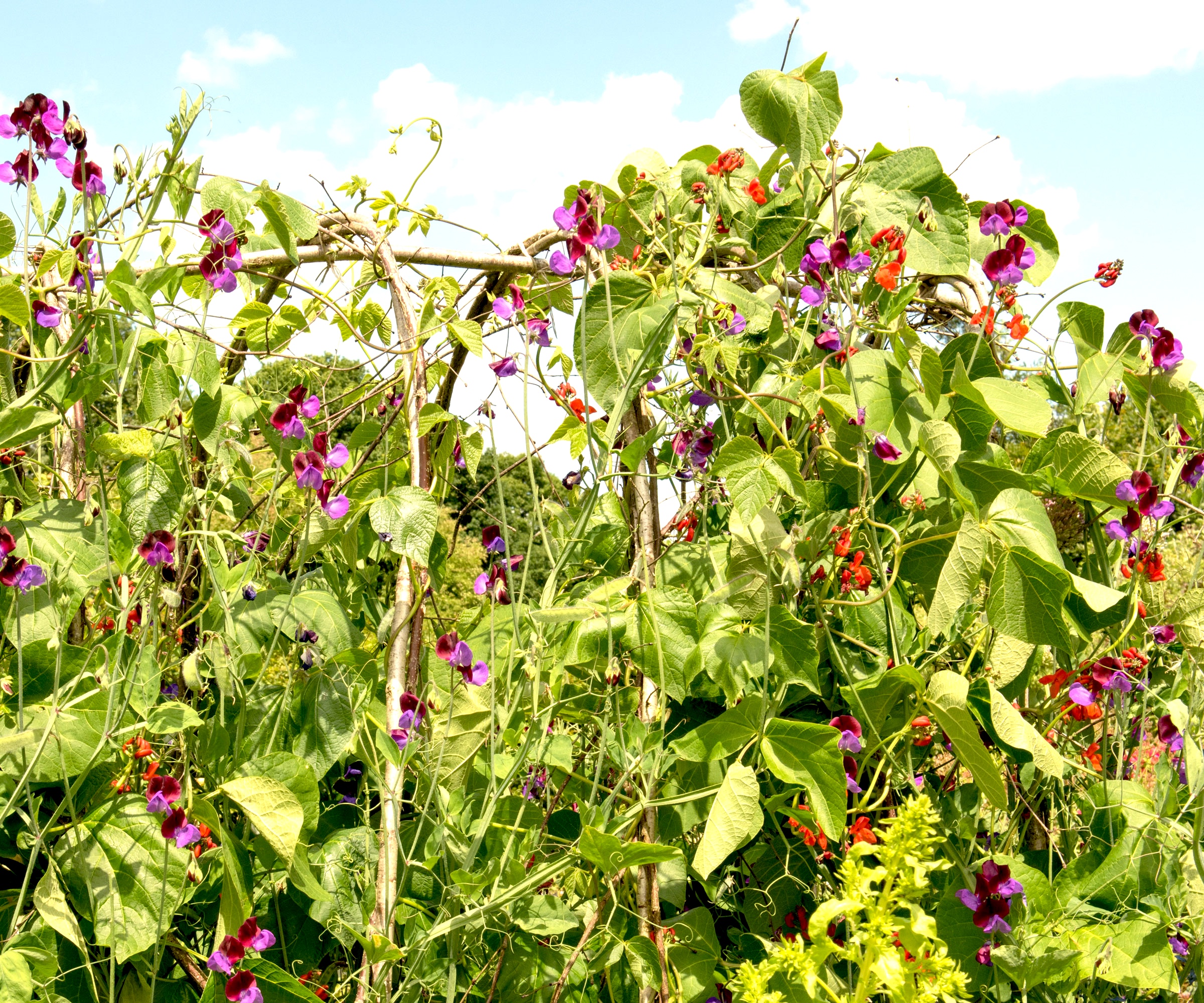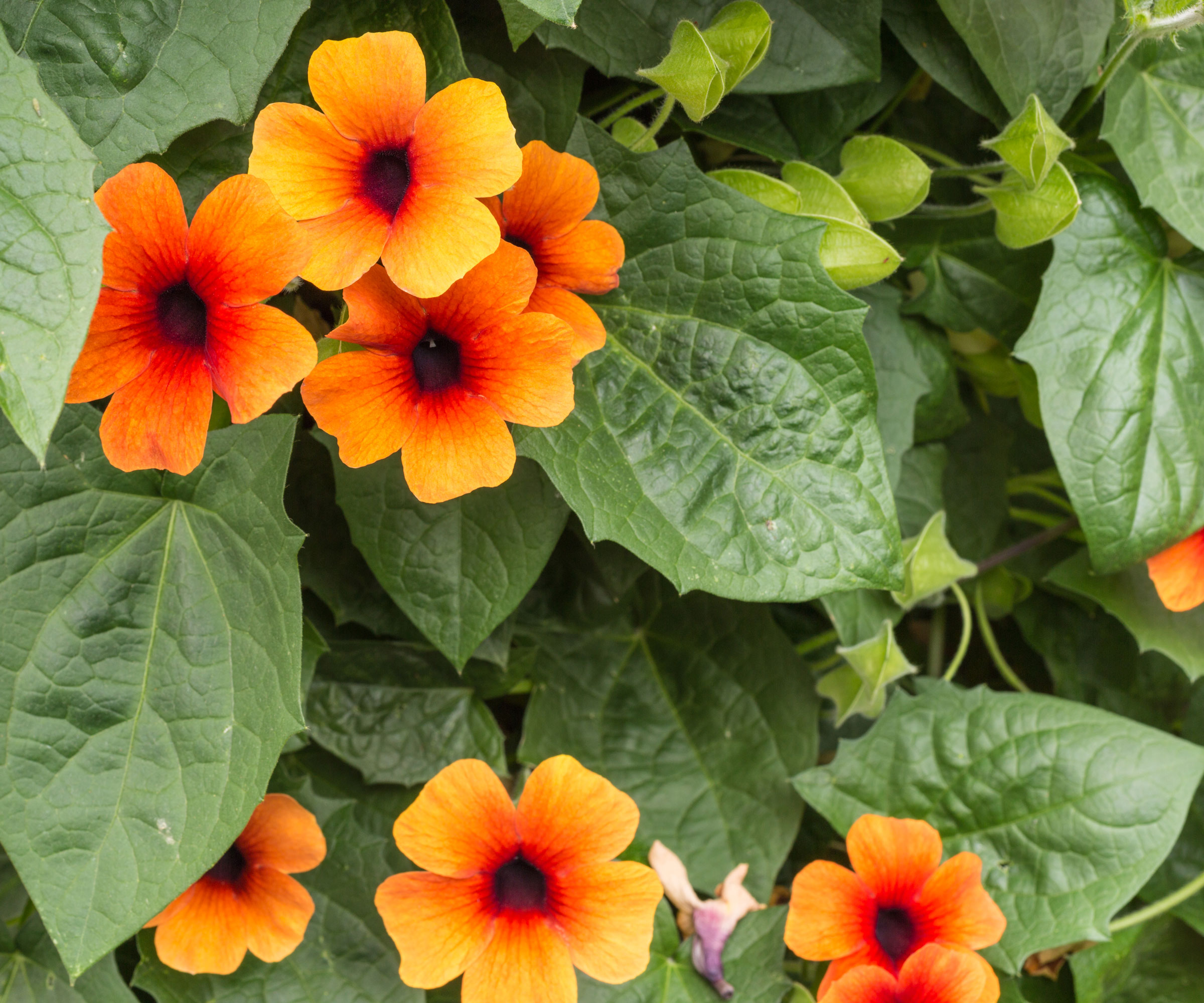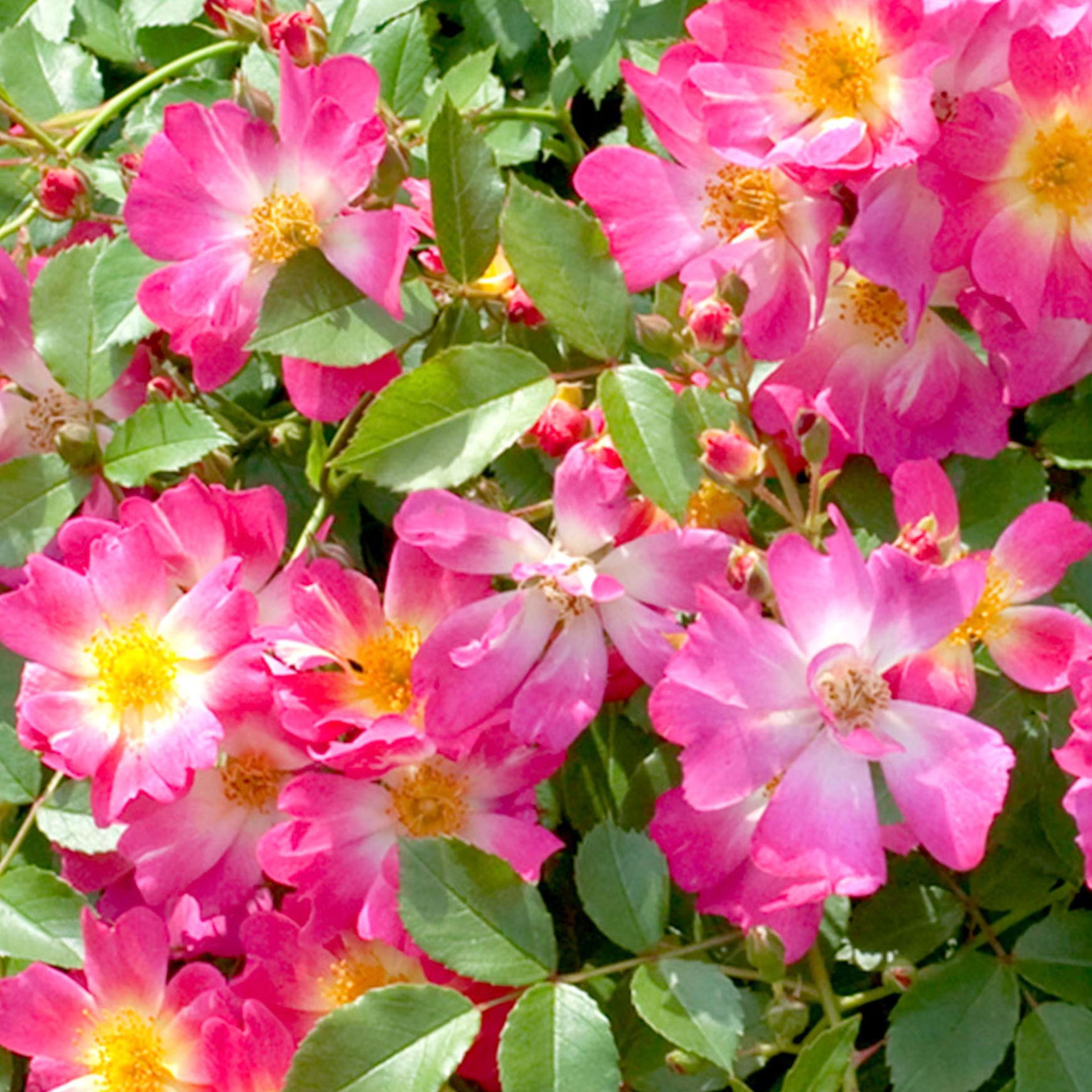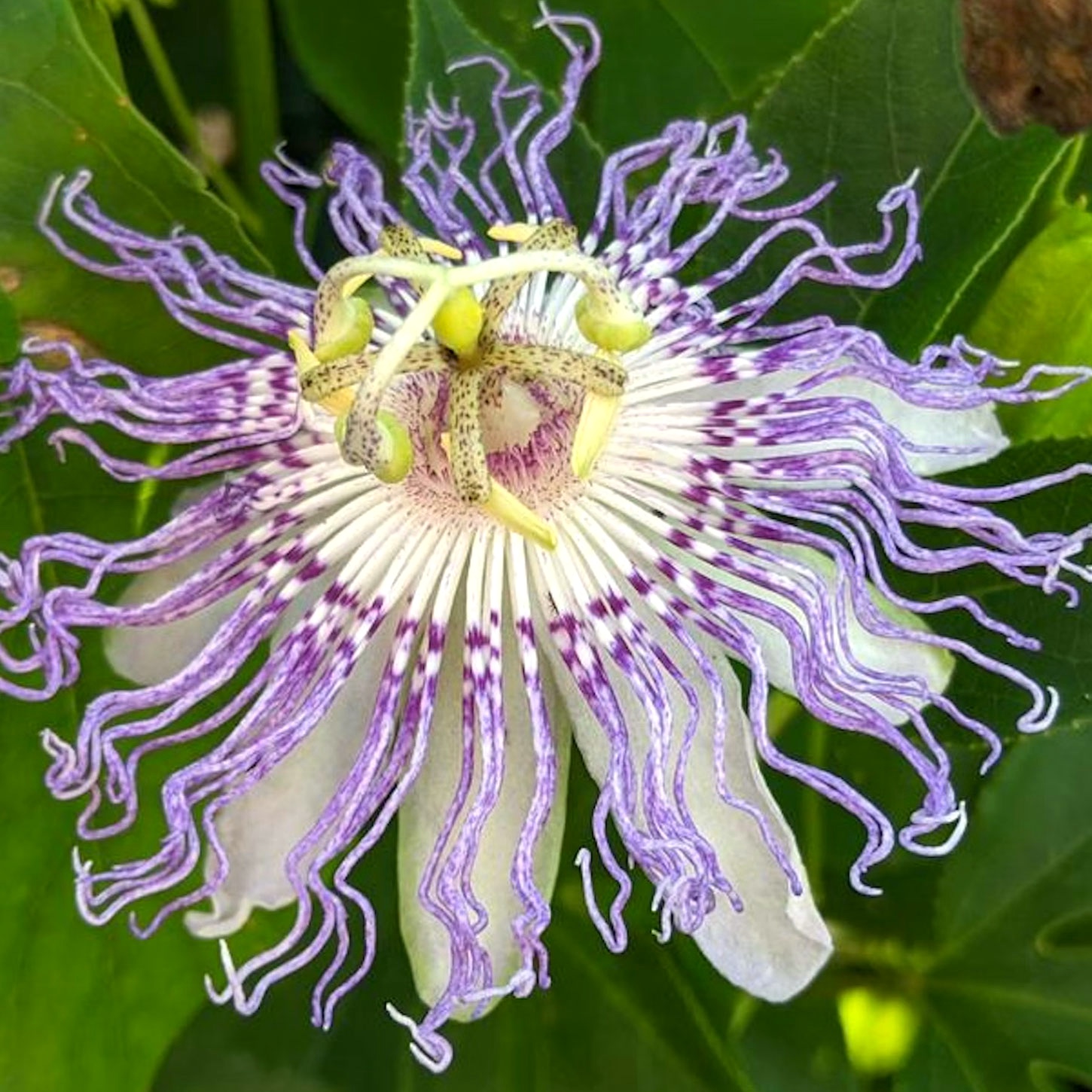Climbing Companions You Need To Try: 5 Exquisite Climbing Flowering Plants To Grow Together For Vitality, Support & Better Blooms
Looking for quintessential plants to fill a trellis, fence, pergola, archway or wigwam? Don’t just pick one! Try these dynamic climbing flowering plants to grow together for long lasting benefits

Amy Draiss

Anyone with a spare vertical space, whether it’s a rustic trellis or utilitarian fence, can benefit from a flowering climber. Still, although plenty of great climbing plant options hold their own in a vertical display, there are a few that seem to look even better when partnered up. Find the right climbing flowering plants to grow together, and you can create visually impressive, more robust, and longer lasting floral arrangements.
Whether you’re after contrasting textures, a combination of tone and fragrance, a unique blend of ornamentals and edibles, or simply a stunning display that lasts as long as possible – there’s something here for you with these five pairs of flowering vines and climbers.
These climbing companions make effective trellis plant partnerships, and also grow well as part of a pergola or arched frame. Together, these fast-growing vines and climbers help create stronger supports, more pollinator-friendly environments, and more gorgeous ornamentals. Here we round up some of the most effective climbing flowering plant combinations.
Which Climbing Plants Are Best Together?
Choosing the perfect partners for your vertical gardening space is simply about making sure that your two plants have similar growing conditions, as well as looking (and sometimes smelling) amazing. When selecting the best trellis plants to grow together, or the best flowering fence friendships, this comes down to an understanding of key cultural requirements such as light exposure, watering preferences and soil pH needs.
Obviously, when selecting plants for climbing a trellis together – or any framework, for that matter – give some thought to the strength of the overall support in relation to the potential weight, height and scale of these plant pairings. Consider how long you think it might take for the plants to reach full maturity and height, in order to reinforce your trellising, fences and other climbing plant supports, if needs be. It’s also worth considering nearby planting options, to see if any other ornamentals or edibles planted elsewhere could benefit from these hard-working climbing companions.
1. Rose And Clematis

There’s a lot more to this dynamic duo than first meets the eye – but first impressions are breathtaking! Aesthetically, these two climbers have enough points of difference to create exciting displays, thanks to the shape and size of their respective petals.
Clems proliferate quickly across exposed areas with their star-shaped blooms, whilst climbing roses create soft and velvety accents. However, these two climbing plants also help each other out in terms of shaping. Rose stems provide a strong structure for the more wiry clem. In turn, clematis foliage fills any gaps around bare rose stems.
Pastel-tinted climbing roses such as pale blush pink ‘New Dawn’ from the Gardening Know How Shop match well with intense burgundy ‘Rouge Cardinal’ clematis from Walmart. Alternatively, rich amber ‘Rise Up Amberness’ climbing rose from Proven Winners is a gorgeous partner for either a deep purple clem or the unusual Woodbine clematis (Virgin’s Bower) from Nature Hills, with its dainty, fluffy flower heads.
Sign up for the Gardening Know How newsletter today and receive a free copy of our e-book "How to Grow Delicious Tomatoes".
2. Passionflower And Abutilon

The striking floral forms of abutilon (aka flowering maple) and passionflower would make them lovely climbers in their own right. However, put them together and you can revel in the drama of two genuinely unusual flowering climbers that sync up surprisingly well – one with its bell-shaped blooms, and the other with its exotic swirls. Both plants enjoy full sun and humid growing conditions.
Abutilon climbers develop masses of flowers in shades of orange or pink. Passionflowers create dramatic accents to offset these walls of color – particularly if you select a breed with rings of white and blue or purple. Try the passionflower variety ‘Maypop’ from the Gardening Know How Shop, which has fruits called maypops that can be eaten fresh from the vine!
3. Clematis And Honeysuckle

Seamlessly merging fragrance and color, the duality of clematis and honeysuckle creates an overall effect that seems conjoined. Depending on the varieties you choose, these plants could be mistaken for being one uber climber. Where one goes big with showy flowers, the other exudes a delectable perfume from compact petal clusters.
Both these climbing giants make excellent options for bees and butterflies, so having them grow together enhances a pollinator garden. Also, given their slightly different flowering seasons, you can look forward to a multi-faceted summer of sights and smells. Just make sure you provide a strong and sturdy framework for this powerful vining combination, and be prepared to prune annually to keep these vigorous plants in good shape.
For a versatile clematis, try ‘Jackmanii’ from Burpee with its large violet blooms. Match with bright pink and white ‘Harlequin Variegated’ honeysuckle from Walmart or golden ‘Hirt’s Gardens John Clayton’ from Walmart – a hummingbird favorite.
4. Runner Beans And Sweet Peas

It may seem slightly quirky, but the pairing of runner beans and sweet peas is one of the most mutually agreeable climbing partnerships you can try. Working harmoniously in tandem, this pairing creates a classic cottage garden look if trained up a wigwam of hazel sticks, or an arched framework in a kitchen garden.
The distinctive heady fragrance of sweet peas helps keep runner bean pests at bay, while attracting pollinators which, in turn, can increase pod set in the beans. Before cropping, however, you can enjoy the flower show! Classic scarlet runner bean combinations like ‘Firestorm’ and ‘Scarlet Emperor’ match well with mixed-color sweet pea medleys such as ‘Sweet Dreams Mix’ from Burpee.
As well as their potential for brilliant floral fusions and crop support, these two climbing companions have one extra superpower. Since they are legumes, they are both nitrogen fixers, improving the ground to help out other plants.
5. Morning Glory and Thunbergia

For sheer color contrast and longevity, the intertwining floral potential of morning glory (Ipomoea purpurea) and black-eyed Susan vine (Thunbergia alata) is a lovely pairing. Both are lovers of full sun and both are vigorous climbers. They also have similarly impressive capacity for quickly filling vertical surfaces such as fences and trellises. They can easily reach as high as 20ft (6m) if allowed to clamber freely.
Most thunbergias tend to be orange and yellow, which works well visually with blue and purple ipomoea. Try the periwinkle prettiness of heirloom ‘Heavenly Blue’ Morning Glory from Burpee or lustrous violet ‘Grandpa Ott’ from Burpee to offset the fruitier oranges and zingier yellows of Black-eyed Susan vine. Or for something different, try a pink morning glory like ‘Arizona Rose’ Thunbergia from Walmart with its velvety ombre tints.
This article features products available from third party vendors on the Gardening Know How Shop. Keep in mind that our plant inventory is limited - so if you’re thinking of purchasing, don’t wait!

Janey is a former assistant editor of the UK’s oldest gardening magazine, Amateur Gardening, where she worked for five years. For the last few years, she has also been writing and editing content for digital gardening brands GardeningEtc and Homes & Gardens. She’s taken part in a range of conservation and rewilding projects for the Royal Horticultural Society (RHS) and the British Trust for Conservation Volunteers (BTCV) as a way of exploring her horticultural horizons. She is currently undertaking her RHS Level 2 certificate in The Principles of Plant Growth and Development.
- Amy DraissDigital Community Manager

